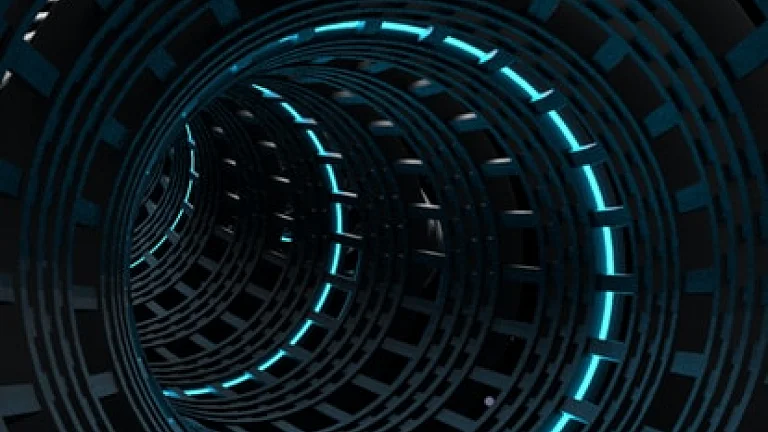You can calculate recall by dividing the number of true positives by the number of constructive cases. The latter includes true positives (successfully recognized cases) and false unfavorable results (missed cases). The accuracy metric is intently related to the confusion matrix, which summarizes the model’s predictions in a tabular kind. The confusion matrix contains the counts of true positives, true negatives, false positives, and false negatives, which are used to calculate accuracy.
We can use other metrics (e.g., precision, recall, log loss) and statistical checks to avoid such problems, just like within the binary case. We can also apply averaging techniques (e.g., micro and macro averaging) to provide a extra significant single-number metric. For an summary of multiclass analysis metrics, see this overview. In probabilistic machine studying problems, the mannequin output isn’t a label but a score. You must then set a call threshold to assign a selected label to a prediction. This chapter explains how to determine on an optimal classification threshold to steadiness precision and recall.
The unwanted presence of lacking and outlier values within the coaching data usually reduces the accuracy of a skilled model or leads to a biased model. This is because we don’t analyze the habits and relationship with other variables appropriately. So, it is necessary to deal with lacking and outlier values well. In both of its varieties, accuracy is a particularly environment friendly and efficient metric to gauge machine studying prediction accuracy. It is doubtless certainly one of the most used metrics in research, where it just isn’t uncommon to have clean and balanced datasets to permit for give consideration to advancements in the algorithmic approach.
F1 Score tries to search out the balance between precision and recall. There are methods like a log, sq. root, or inverse of the values to take away skewness. They discover patterns, develop understanding, make decisions, and evaluate those decisions. The bigger the ML tasks you have, the more complex the system of metrics you need to monitor. You need to learn about them, know how to implement them, and keep them in examine continuously.
In this case, the class with a better occurrence may be accurately predicted, leading to a high accuracy score, while the minority class is being misclassified. This offers the incorrect impression that the mannequin is performing properly when it isn’t. Accuracy is utilized in classification issues to tell the share of correct predictions made by a model. Accuracy score in machine learning is an evaluation metric that measures the variety definition of accuracy of appropriate predictions made by a mannequin in relation to the entire number of predictions made. We calculate it by dividing the variety of correct predictions by the entire variety of predictions. For instance, in churn prediction, you can measure the value of false negatives (i.e., failing to identify a customer who’s prone to churn) as the lost revenue from this buyer.
What’s Accuracy?
Each metric reflects a different aspect of the mannequin high quality, and relying on the use case, you would possibly prefer one or another. In the Accuracy case, the metric value interpretation is extra or less straightforward. If you would possibly be getting more right predictions, it leads to a higher Accuracy rating.

It provides a broad vary of already tried and tested metrics with worked-out implementation and detailed documentation. For an overview of multilabel metrics, see this review article or this guide on the topic. Subset Accuracy and Multilabel Accuracy usually are not the only metrics for multilabel problems and aren’t even the most extensively used ones. To better perceive our model’s accuracy, we want to use different ways to calculate it.
Tips On How To Check The Accuracy Of A Machine Studying Model?
For the White class, exchange each of its occurrences as Positive and all different class labels as Negative. After substitute, listed here are the ground-truth and predicted labels. The next determine reveals the confusion matrix for the White class. When the samples are fed into a mannequin, here are the predicted labels. There are alternative ways to calculate accuracy, precision, and recall for multi-class classification.

The second mannequin has a greater metric value but does not have any predictive power. So, be very cautious and always verify whether or not your knowledge has a class imbalance drawback before applying Accuracy. Because of its widespread use, accuracy score is supported by virtually each Machine Learning and Deep Learning library. Three Python code snippets are proven on this page, every one calculating Accuracy.
When To Make Use Of Accuracy Rating In Machine Studying
It can take values between zero and 1, the place zero represents the best state of affairs of no errors. In this downside, we try to predict 103 courses represented as a giant sparse matrix of output labels. It doesn’t matter if your model achieves ninety nine.99% accuracy if missing a single case is sufficient to sabotage the entire system. Relying on the accuracy rating as calculated above is not sufficient and might even be misleading. While you obtain a high accuracy value, it provides you a false premise as your dataset is extremely imbalanced, and mispredicting the minority class is expensive.
The yellow instance comes underneath major colors and bright colours labels. If we tested the recall of this ineffective model, however, it will be obvious that the model was flawed. Ultimately you have to use a metric that fits your specific situation, business drawback, and workflow and that you could effectively talk to your stakeholders.
- And you can’t make informed decisions if your predictions are inaccurate or faulty.
- You can achieve an ideal accuracy of 1.zero when every prediction the model makes is appropriate.
- Numeric knowledge could be made discrete by grouping values into bins.
- Accuracy is a metric that measures how usually a machine learning mannequin correctly predicts the result.
- The choice threshold is the worth above which input is assessed as belonging to a selected class and below which it is classified as belonging to a unique class.
The advantage of MSE being that it’s easier to compute the gradient, whereas Mean Absolute Error requires sophisticated linear programming tools to compute the gradient. As, we take sq. of the error, the impact of larger errors turn into more pronounced then smaller error, hence the model can now focus more on the bigger errors. The real drawback arises, when the cost of misclassification of the minor class samples are very high. If we cope with a rare but deadly illness, the worth of failing to diagnose the illness of a sick particular person is much greater than the worth of sending a wholesome person to more tests.
In Machine learning, we all the time work with a lot of labels and datasets. Sometimes it takes more work to predict all of them correctly. But using the above accuracy technique, ques we can discover the accuracy very easily compared with others. The subset accuracy technique shows the low performance of the model in contrast with other techniques. On the Y-axis, we can see the precise label, and on the X-axis, we’ve the predicted labels. Ideally, the higher the values on the diagonal, the better the classification mannequin; this tells us that the model predicted many of the values accurately.
Mannequin Accuracy
Accuracy is a proportional measure of the number of right predictions over all predictions. Correct predictions are composed of true positives (TP) and true negatives (TN). All predictions are composed of the entire thing of optimistic (P) and adverse (N) examples. P is composed of TP and false positives (FP), and N is composed of TN and false negatives (FN).

used as the only metric. For instance, it doesn’t inform you what types of errors your model makes. With regards to traditional Machine Learning tools, Scikit-learn is by far essentially the most broadly used Python package. We predict that Sklearn will be your go-to software for Accuracy calculations (especially, in case you are working with the tabular data).
From our experience, Sklearn is the tool you will probably use probably the most to calculate Accuracy (especially, in case you are working with the tabular data). This measurement does not give information about midway accuracy due to https://www.globalcloudteam.com/ the stringent commonplace it is dependent upon. On the off likelihood that our model neglects to foresee only a solitary mark from the 103 but performs properly on the rest, Subset Precision really orders these expectations as disappointments.
Accuracy is a metric that typically describes how the model performs throughout all classes. It is calculated as the ratio between the number of appropriate predictions to the total number of predictions. To extract more details about model efficiency the confusion matrix is used. The confusion matrix helps us visualize whether or not the mannequin is “confused” in discriminating between the two courses. The labels of the two rows and columns are Positive and Negative to mirror the 2 class labels. In this instance the row labels characterize the ground-truth labels, while the column labels symbolize the predicted labels.

